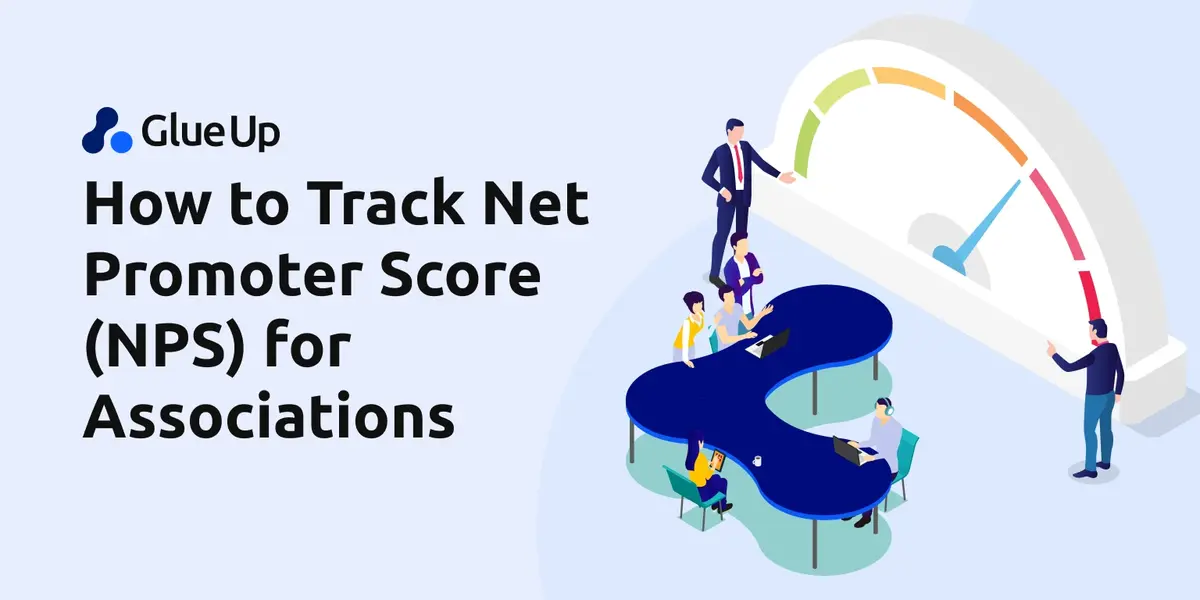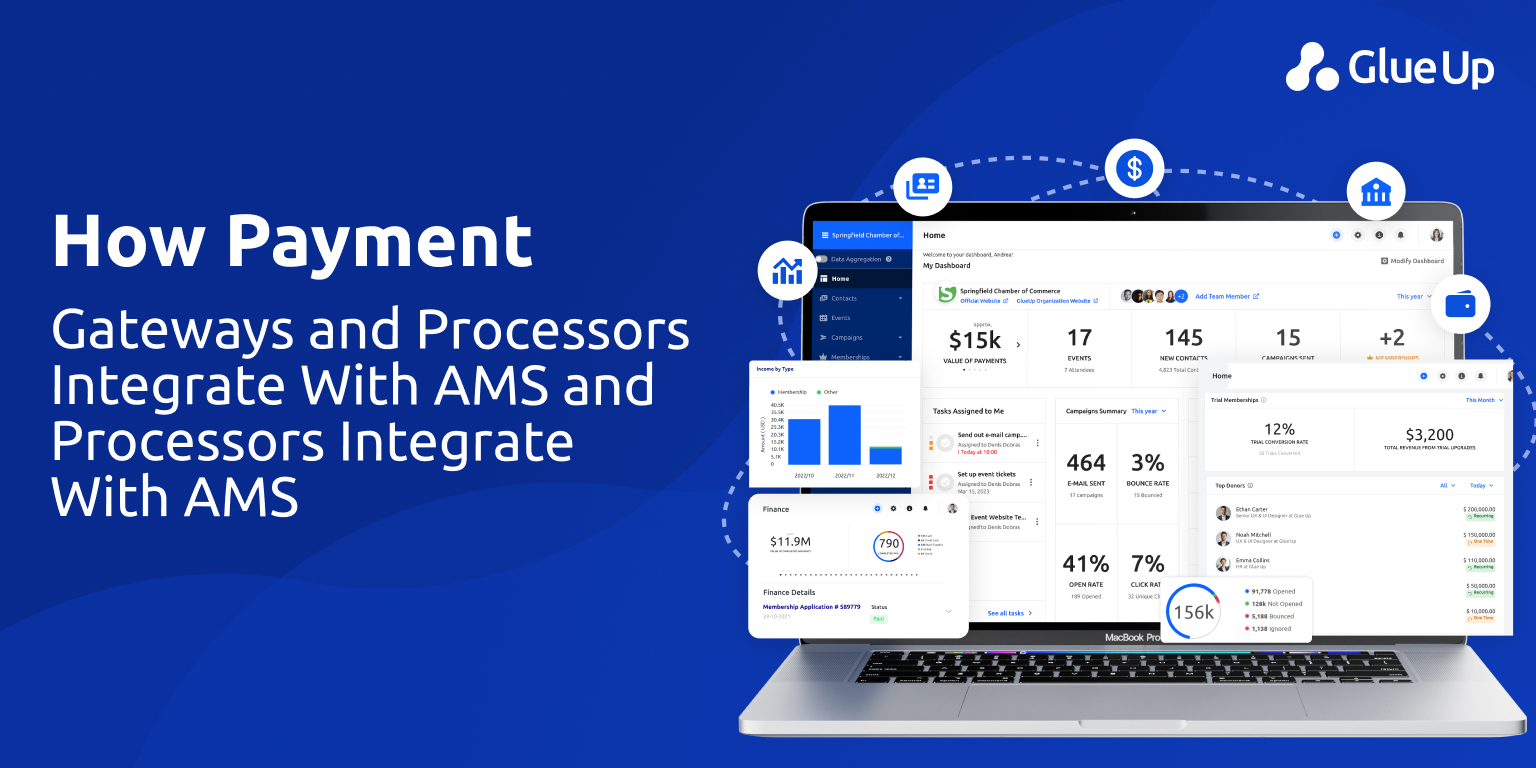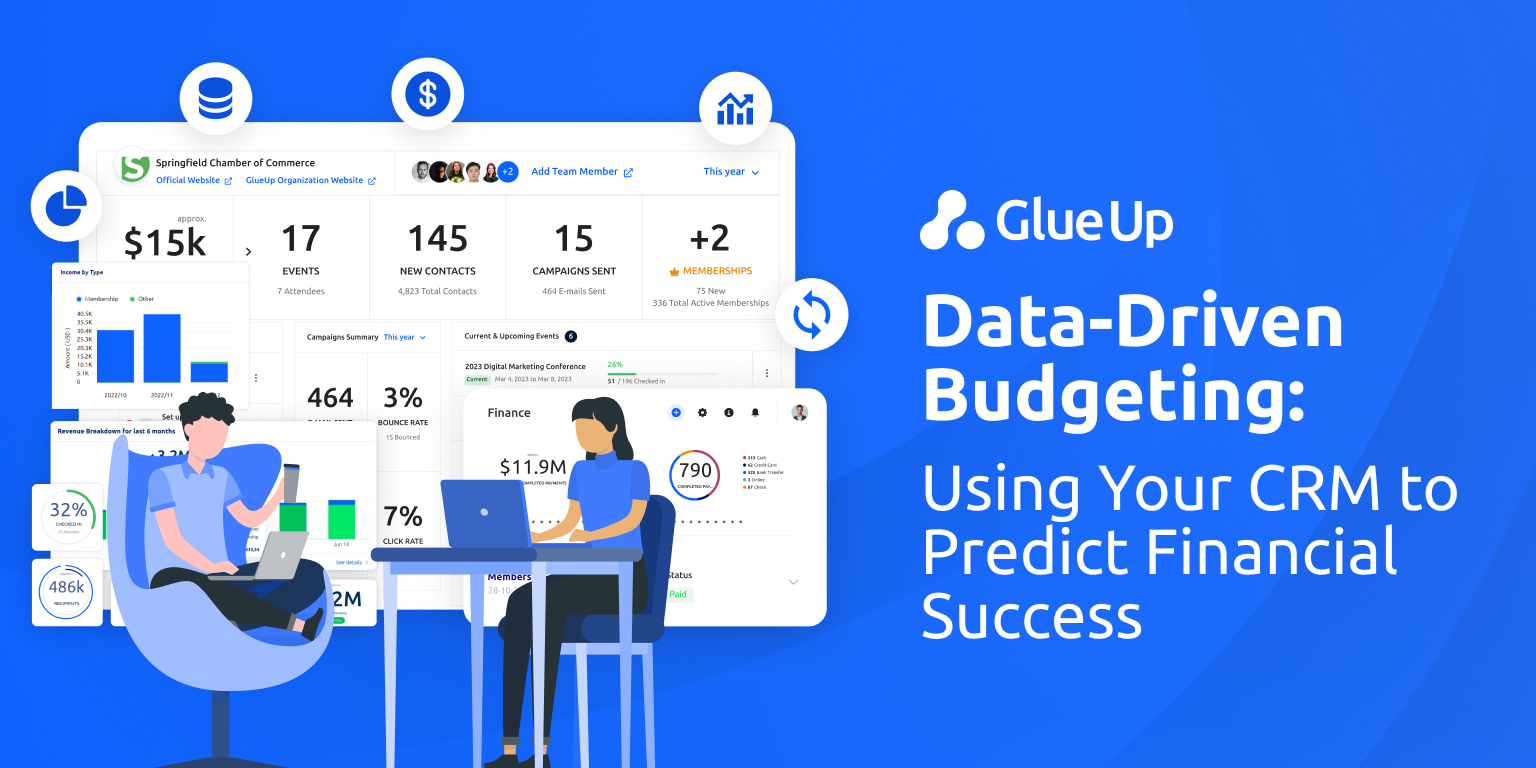
Organizations must constantly gauge member satisfaction and loyalty to ensure long-term success. One powerful tool for achieving this is the Net Promoter Score (NPS).
Net Promoter Score (NPS) is a metric that provides valuable insights into member sentiment and overall satisfaction. For associations, tracking NPS can provide valuable insights into member satisfaction and loyalty.
In this blog post, we'll explore how you can effectively implement and track NPS to drive growth and improve member experiences.
Key Takeaways
- NPS is a valuable metric for measuring member satisfaction and loyalty in associations, providing insights into potential renewals and brand advocacy.
- Timing and frequency of NPS surveys are crucial - aim for quarterly surveys or after key interactions, while being careful to avoid survey fatigue.
- Customize NPS surveys with 1-2 follow-up questions to gather more context and actionable feedback from members.
- Segment your audience to understand how different member groups perceive your association, allowing for tailored strategies and communications.
- Analyze NPS results, act on the findings, and close the feedback loop by following up with both detractors and promoters to demonstrate that you value member input.
Understanding NPS

NPS involves a simple survey asking your members to rate the likelihood of recommending your association, usually on a scale of 0 to 10. This score is critical to understanding the possibility of membership renewals and brand advocacy, expressing member satisfaction and loyalty as a single number.
Implementing NPS Tracking for Associations
Implementing NPS tracking requires careful planning and execution. Here are some steps you can take to get started.
Choose the Right Timing and Frequency
Timing is crucial when implementing NPS surveys. To maximize response rates and gather meaningful feedback, it's essential to survey members at the right moments, for example:
- After key interactions (e.g., membership renewal, event attendance): This allows you to capture feedback while the experience is still fresh in members' minds.
- At regular intervals (e.g., quarterly or annually): Regular surveys help you track changes in member sentiment over time and identify trends.
- At specific milestones in the member journey: Surveying members at critical points, such as after onboarding or when they reach a membership anniversary, can provide insights into their experience at different stages.
When determining the frequency of your surveys, strike a balance between gathering sufficient data and avoiding survey fatigue. Be mindful not to over-survey your members, as this can lead to decreased response rates and potentially annoy them.
It's better to aim for once per quarter unless there are specific reasons to do so more frequently.
Select an Appropriate Survey Tool
Choosing the right survey tool is essential for a smooth and effective NPS tracking process.
Many association management software (AMS) offers built-in survey capabilities, which can be a convenient option. This is particularly true for robust software like Glue Up which has AI functionalities for survey creations as well.
Furthermore, using an AMS for the survey creation and evaluation can be helpful as it provides a bird-eye view of the survey results along with other essential member data including events, emails, and other engagement metrics.
In case your AMS doesn't have robust survey features, you can consider dedicated NPS tools or general survey platforms like SurveyMonkey. These platforms often provide more advanced functionality and can be a good choice if you plan to conduct frequent or complex surveys.
Customize the Survey
While the core NPS question ("How likely are you to recommend our association to a friend or colleague?") should remain consistent, customizing your survey with additional questions can help you gather more valuable insights.
Consider adding 1-2 follow-up questions to provide context and actionable feedback. For example:
- "What is the primary reason for your score?": This open-ended question allows members to explain their rating in their own words, providing qualitative data to complement the quantitative NPS score.
- "How can we improve your experience with our association?": Asking members for specific suggestions helps identify areas for improvement and shows that you value their input.
When crafting follow-up questions, keep them concise and focused.
Avoid overwhelming respondents with too many questions, as this can lead to survey abandonment. Additionally, consider using branching logic to display different questions based on the member's NPS score.
For instance, you might ask Detractors (those who score 0-6) for more detailed feedback on their pain points, while asking Promoters (those who score 9-10) what they value most about their membership.
Segment Your Audience
Understanding how different member groups perceive your association is crucial for tailoring your strategies and communications.
Different member segments may have varying experiences and expectations. Thus, it is better to segment your NPS survey results to gain a deeper understanding of the unique challenges and needs of each group.
Here are some segmentations you can consider:
- Membership types or levels
- Years of Membership
- Industry or profession
- Engagement level (e.g., event attendance, volunteer participation)
Analyze and Act on Results

Collecting data is only the first step. To make NPS tracking valuable, you must dedicate time and resources to analyzing the results and taking action based on your findings.
Here are some key steps to follow:
- Regularly review your NPS trends
- Identify patterns in feedback from Promoters and Detractors
- Share insights with relevant teams (e.g., membership, events, communications)
- Develop action plans to address common issues and enhance positive experiences
Close the Feedback Loop
Demonstrating that you value and act on member feedback is essential for building trust and fostering long-term relationships. Show members that their feedback matters by:
- Follow up with Detractors to address their concerns
- Thank Promoters and consider involving them in testimonials or case studies
- Communicate changes made based on member feedback
Closing the feedback loop not only helps resolve individual issues but also shows your entire membership that you are committed to their success and satisfaction.
Benchmark Your Results
While tracking your own NPS over time is important for measuring progress, it's also valuable to understand how your association compares to others in your industry.
Benchmarking your NPS against industry standards can provide context for your scores and help you set realistic goals for improvement.
Look for NPS benchmarks specific to associations or nonprofits to gauge your performance relative to peers. Keep in mind that benchmarks can vary by factors such as association size, type, and geographic location, so it's important to find the most relevant comparisons for your organization.
Calculating Net Promoter Score (NPS)
Once you have the results of the Net Promoter Score, you can assess the results by using the following scale.
- Use a scale of 0 to 10, with 0 indicating "Very Unsatisfied" and 10 being "Very Satisfied".
- Categorize responses:
- Promoters (score 9-10): Loyal members who keep renewing and referring others, fueling growth.
- Passives (score 7-8): Satisfied but unenthusiastic members who are vulnerable to competitive offerings.
- Detractors (score 0-6): Unhappy members who damage the brand and impede growth through negative word-of-mouth.
- Now subtract the percentage of Detractors from the percentage of Promoters. This will give you your Net Promoter Score (NPS)
Interpreting NPS
- A good NPS score typically falls between +30 and +70.
- Achieving average Net Promoter Scores above 50 is excellent, suggesting that many existing customers are satisfied.
- A NPS score below 0 indicates that improvements are required.
Best Practices for NPS Tracking

Effective NPS tracking requires a structured approach that combines quantitative data with qualitative insights.
Make sure to follow these best practices to gain a comprehensive understanding of member satisfaction and loyalty. Here are key strategies to consider:
- Explain the Methodology: Clearly articulate how NPS was calculated and what the response rates were, which ensures data transparency.
- Incorporate Qualitative Feedback: Alongside quantitative NPS scores, include qualitative feedback to give more depth and highlight specific areas for improvement.
- Link NPS to Other KPIs: Show how NPS correlates with other metrics like Churn Rate and Member Retention Rate to provide a holistic view of performance.
- Discuss Implications for Strategy: Connect NPS data to marketing strategies, showing how specific approaches may have influenced customer perceptions and satisfaction.
- Recommend Actionable Improvements: Based on NPS findings, suggest data-informed strategies for enhancing customer satisfaction and loyalty.
All in all, the Net Promoter Score (NPS) offers a powerful lens through which to view your organization's relationship with its members. Thus, by implementing these steps and consistently tracking your NPS, you'll be well on your way to building stronger relationships with your members and fostering long-term loyalty.
Ultimately, your commitment to understanding and acting on member feedback will be the key to your association's growth and success in the years to come.



